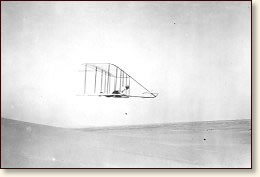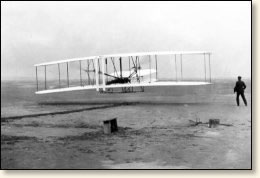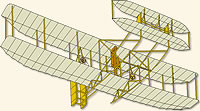Alexander Brongniart was a French zoologist, mineralogist, and chemist who had worked hand in hand with Georges Cuvier concerning geology around Paris. He was also the Sevres porcelain factory director and had been responsible for the worldwide fame of the factory. He had been the professor at the Museum of Natural History in Paris teaching mineralogy, and he had established the basic principles of ceramic chemistry. Along with these accomplishments, he had also made contributions to science by introducing a new classification of reptiles, extensively studying trilobites, and contributed to stratigraphy through developing markers which can be used for dating strata.
Personal Life and Education
Born in Paris, France on the 5th of February back in 1770, Alexandre Brongniart was the son of Anne-Louise Degremont and Alexandre-Théodore Brongniart who was a distinguished architect in Paris. He studied for a time at the École des Mines before moving to the École de Médecine. There was a time when he became the assistant to Antoine-Louis Brongniart who was, at that time, a professor at Jardin des Plantes teaching chemistry. This had been one of his earliest exposures to the field of chemistry and may have been the spark for his interest in this field.
While he was the director of the porcelain factory which to this day remains his legacy, he was able to marry Cecile who was the daughter of Charles-Étienne Coquebert de Montbret, a statesman and a scientist. They had just one son, who became the paleobotanist and botanist named Adolphe-Théodore Brongniart who had gained his own name in the field of science.
Early Career
Alexandre Brongiart gained even more exposure to chemistry when he served as the aide-pharmacien for the French forces which were in the Pyrenees. In 1794 though, he returned to Paris and had been appointed as the ingénieur des mines. Three years later, he then became a professor at the École Centrale des Quatre-Nations, teaching natural history. He was appointed as ingénieur en chef des minesin 1818, and come 1822, he then succeeded the professor of mineralogy, R. J. Haüy at the Muséum d’Histoire Naturelle. In 1815, Alexandre Brongiart was elected as one of the members of the Académie des Sciences.
Most of Alexandre Brongniart’s life was spent in his hometown where he conducted various researches and where he had lived an academic life being a professor and part of the administrations of the universities he was in. He had been known to help his students and had even had gatherings for scientists at his own evening salons.
After the time of the Revolution, he had visited England in order to learn the ceramics techniques. He had been able to travel Western Europe and even published his own geological papers about areas such as Italy and Sweden. It was in 1800 when he became appointed as the director of the Sèvres porcelain factory, and this was the post he had held until his death in October 7, 1847.
Contributions to Science
While he had left his legacy as the director of the porcelain factory and having made contributions to the chemistry of ceramics in particular, his first publications weren’t all about the ceramic industry. It is a given that this industry had been a big part of his life, but he also had other interests. His first papers had been on mineralogy as well as zoology.
In the field of zoology, he had his work called “Essai d’une classification naturelle des reptiles” published in 1800. This paper had emphasized how important comparative anatomy was. Because of this basis, he had been able to further split the class Reptilia, into four more groups.
From his studies on reptiles, he noticed how one of the groups– the batrachians were much different compared to the other three groups. The distinction had been noticeable especially in their reproductive organs which had been a lot more important compared to the much more observable difference of limbless snakes and the others. Because of this finding, Pierre Latreille had moved the batrachians to their separate class—the amphibians, while the reptile grouping of Brongniart of the true reptiles namely saurian, ophidians, and chelonians, remain to this day as part of the modern systematics.
In 1807, he published Traité élémentaire de mineralogy. In this work he had classed basalt and clay despite the difficulty of fine-grained rocks from the true and simple minerals. In his studies about mineralogy, he had emphasized on how important it was to study the different modes of occurrence along with their properties. He did, however, limit his expression concerning the igneous or aqueous origins of basalt back in those days.
His studies concerning mineralogy and zoology may have seemed like two very different scientific fields, but these two met when he began his geological work which had then made him famous in the world of science. He had worked alongside Cuvier who had been working on reconstructions of the extinct animals, specifically the mammals which were in Paris. They had worked in collaboration to survey the area and together they determined the strata order of the fossils they have located. Together, they published the “Essai sur la géographie mineralogiquc des environs de Paris” in Jun 1808, and this paper had included a colored and detailed geological map. Known for his modesty, Brongniart’s name appeared after Cuvier’s, despite the fact that majority of the work in the said paper had been his.
The “Tableau des terrains qui composent l’écorce du globe” was Brongniart’s last major work and was published in 1829, and this work had featured the interpretation and ordered classification of rocks. Unlike his earlier works though, this publication received much less recognition and had minimal influence on the development of geology. Despite this, however, his stratigraphical works had given a great principal model which had served as the pattern of other more productive geological works in the years 1810-1840 in Europe. Because of his works, geology in nineteenth century Europe had been changed and his contributions are still credited even to this day.




.jpg)




.jpg)


.jpg)






